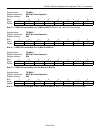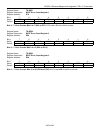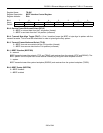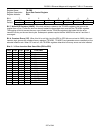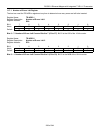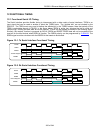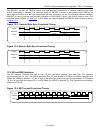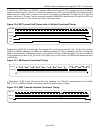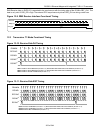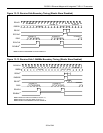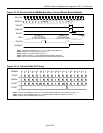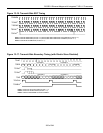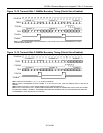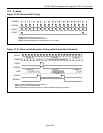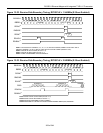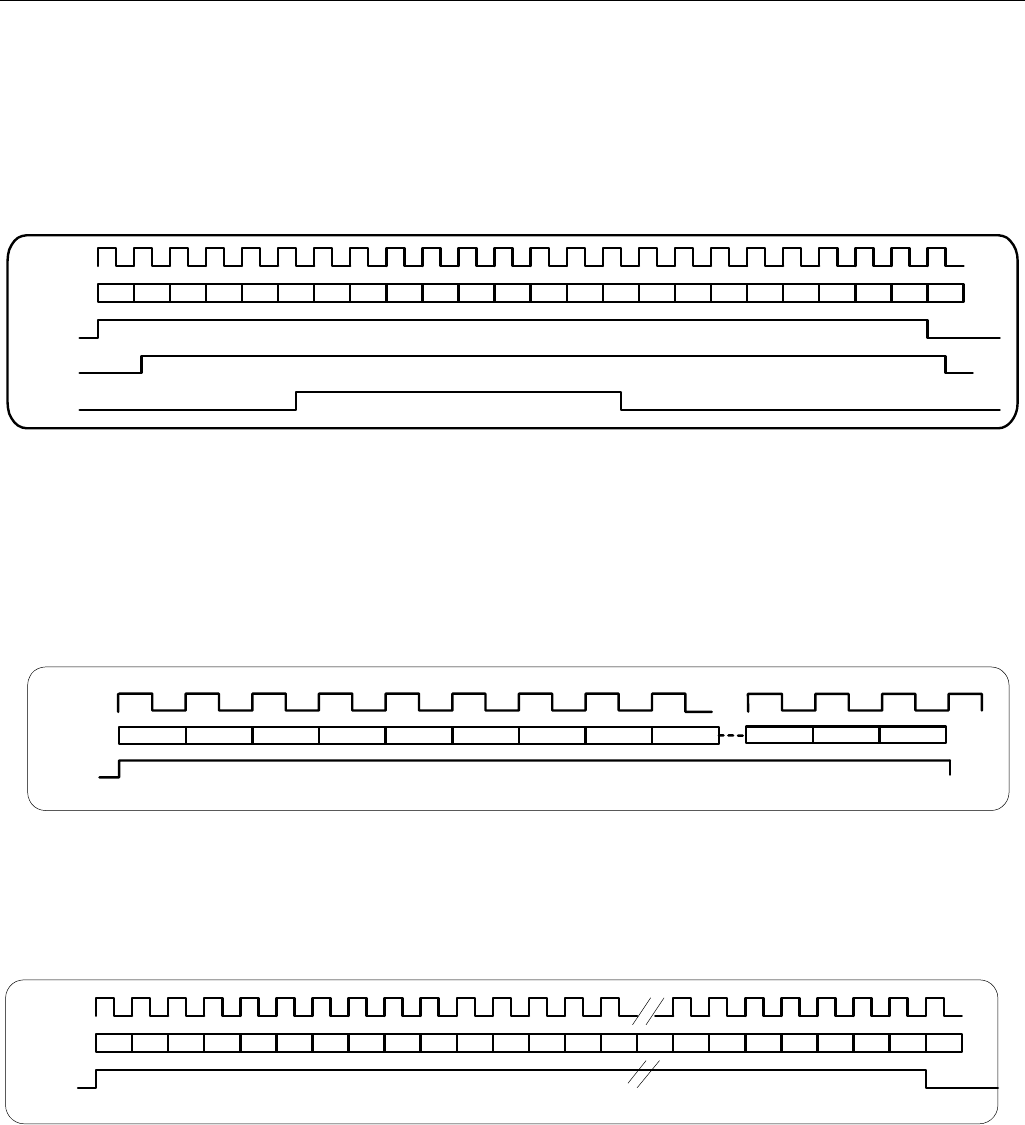
DS33R11 Ethernet Mapper with Integrated T1/E1/J1 Transceiver
302 of 344
In Half-Duplex (DTE) Mode, the DS33R11 supports CRS and COL signals. CRS is active when the PHY detects
transmit or receive activity. If there is a collision as indicated by the COL input, the DS33R11 will replace the data
nibbles with jam nibbles. After a “random“ time interval, the packet is retransmitted. The MAC will try to send the
packet a maximum of 16 times. The jam sequence consists of 55555555h. Note that the COL signal and CRS can
be asynchronous to the TX_CLK and are only valid in half duplex mode.
Figure 12-6. MII Transmit Half Duplex with a Collision Functional Timing
TXD[3:0]
TX_EN
TX_CLK
P R E A M B L E J J J J J J J J
CRS
COL
Receive Data (RXD[3:0]) is clocked from the external PHY synchronously with RX_CLK. The RX_CLK signal is
2.5MHz for 10Mbit/s operation and 25MHz for 100Mbit/s operation. RX_DV is asserted by the PHY from the first
nibble of the preamble in 100 Mbit/s operation or first nibble of SFD for 10 Mbit/s operation. The data on RXD[3:0]
is not accepted by the MAC if RX_DV is low or RX_ERR is high (in DTE mode). RX_ERR should be tied low when
in DCE Mode.
Figure 12-7. MII Receive Functional Timing
RXD[3:0]
RX_CLK
P R E A E M B L E
F C S
In RMII Mode, TX_EN is high with the first bit of the preamble. The TXD[1:0] is synchronous with the 50MHz
REF_CLK. For 10 Mbit/s operation, the data bit outputs are updated every 10 clocks.
Figure 12-8. RMII Transmit Interface Functional Timing
TXD[1:0]
TX_EN
REFCLK
P R E A M B L E F C S



